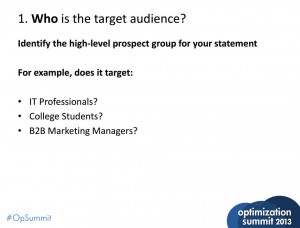Customer Connection: Does your entire marketing process connect to your customers’ motivations?
For roughly the last six years, my focus has been customer research – specifically how and why people behave the way they do when they come to a point of decision online.
After directing hundreds of real-time online tests and conducting a number of brand-side marketer interviews, I’ve discovered there’s simple a secret to using the Conversion Heuristic of MarketingSherpa’s sister brand, MarketingExperiments, to unlock some of the double- and triple-digit gains I’ve witnessed first-hand over the years.
I’ll explain with a recent story of my own.
There’s a story behind everything that’s bought
On January 2, my wife went from happily seven months pregnant to becoming a new mom two months early – in less than 48 hours.
She suddenly put her career on hold and committed to meeting the challenges our daughter faced from premature birth. We were in the hospital every day for a month and brought our bundle of joy home a month earlier than expected.
It’s safe to say my wife’s recent journey has been one of rediscovery with little notice. And, with her birthday coming up soon, I wanted to find a way to delight her and confirm her talent as a person. So, I went to build a custom gift presentation focused on one of her most promising and enjoyable hobbies: baking.
A company becomes my cornerstone
The first place I went to buy products for this presentation was one of the e-commerce stores she visits most – King Arthur Flour. Over the last year, she has mentioned things she would love to have from the site, so I decided to fulfill those requests all at once.
The added bonus here is it would excite her to have all of the new tools and special ingredients she wanted and would confirm my belief in her baking talents … one delicious confection after another.
So, from the homepage to checkout, I processed every piece of marketing content in context of what I was trying to do for my wife. If something didn’t fit my vision for this presentation, then it wasn’t for me.
My cornerstone gets cracked
It’s inescapable for anyone in e-commerce – some errors will occur. A potent baking ingredient came apart during shipment and also ruined two other key items for my presentation. Making matters worse … her birthday was in less than two days.
I quickly contacted King Arthur Flour to see if they could help. When I spoke with someone from the team about my situation, they agreed to process an overnight replacement of those items without question.
All seemed to be well again …
Until the package didn’t arrive the following day.











